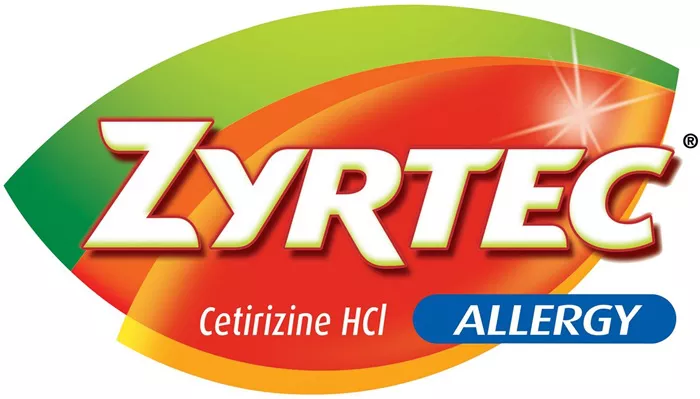In the world of skincare, acids have become one of the most talked-about ingredients. These potent substances are known for their ability to exfoliate, rejuvenate, and treat various skin concerns. They play a crucial role in skin care routines, offering everything from brightening and smoothing to combating acne and fine lines. With a wide variety of acids available, understanding their benefits and how to incorporate them into your skincare routine can be a game-changer for achieving healthy, radiant skin.
Acids in skincare are typically used for their exfoliating properties, which help remove dead skin cells, unclog pores, and promote cell turnover. They can be found in a range of products, including toners, serums, masks, and moisturizers. But not all acids are created equal—each type of acid serves a different purpose, making it essential to choose the right one for your skin type and specific concerns. This article will explore the most commonly used acids in skincare, how they work, and how to use them effectively to enhance your skin’s health.
The Role of Acids in Skin Care
Acids in skincare are typically divided into two main categories: exfoliating and non-exfoliating acids. Exfoliating acids, such as AHAs (alpha hydroxy acids) and BHAs (beta hydroxy acids), are primarily used to slough off dead skin cells and encourage cell renewal. Non-exfoliating acids, on the other hand, are often used for their moisturizing, anti-inflammatory, or soothing properties.
The reason acids are so effective in skincare lies in their ability to penetrate the skin and promote various processes that support healthy skin function. Whether you’re dealing with acne, dryness, dullness, hyperpigmentation, or aging, there’s an acid that can target your specific concern. However, with great power comes great responsibility—acids can be potent, so it’s important to understand how to incorporate them into your routine and avoid over-exfoliation.
Alpha Hydroxy Acids (AHAs)
Alpha hydroxy acids (AHAs) are water-soluble acids derived from fruits, milk, and other natural sources. They are widely used in skincare for their exfoliating and skin-brightening properties. AHAs work by breaking down the bonds that hold dead skin cells together, allowing them to be sloughed off more easily. This process helps to reveal fresher, smoother skin and promotes a more even skin tone.
Types of AHAs and Their Benefits
There are several types of AHAs commonly used in skincare products, each with its unique benefits. The most popular AHAs include glycolic acid, lactic acid, and citric acid.
Glycolic Acid: Glycolic acid, derived from sugar cane, is one of the most effective and widely used AHAs. It has the smallest molecular structure, which allows it to penetrate the skin more deeply. Glycolic acid is great for addressing fine lines, wrinkles, and uneven skin tone, making it a popular choice in anti-aging products. It can also help reduce the appearance of acne scars and dark spots.
Lactic Acid: Lactic acid, derived from milk, is a gentler AHA compared to glycolic acid. It is perfect for those with sensitive skin or those new to exfoliation. Lactic acid helps improve skin texture by removing dead skin cells and hydrating the skin. It’s particularly useful for dry skin, as it also helps to retain moisture.
Citric Acid: Citric acid is derived from citrus fruits and is often used for its brightening effects. It helps to exfoliate the skin and remove dead skin cells while also providing antioxidant protection. It can also promote collagen production and reduce the appearance of sun damage.
How to Use AHAs in Your Skin Care Routine
AHAs are typically used in concentrations ranging from 5% to 20% in skincare products. For beginners, it’s best to start with lower concentrations and gradually increase as your skin builds tolerance. It’s essential to apply AHAs on clean, dry skin to allow for maximum absorption. Additionally, since AHAs can increase sun sensitivity, it’s crucial to wear sunscreen daily when using products containing these acids.
Beta Hydroxy Acids (BHAs)
Beta hydroxy acids, primarily known as salicylic acid, are oil-soluble acids that are excellent for treating acne and oily skin. BHAs are able to penetrate deeper into the pores than AHAs, making them particularly effective for targeting clogged pores and reducing inflammation. BHAs are also known for their anti-inflammatory properties, which help soothe irritated skin, making them suitable for individuals with sensitive skin or acne-prone conditions.
Salicylic Acid
Salicylic acid is the most commonly used BHA in skincare products. It is derived from willow bark and has been used for centuries to treat acne and skin inflammation. Salicylic acid works by exfoliating the skin’s surface and penetrating deep into the pores to help clear them of excess oil, dead skin cells, and bacteria. This makes it particularly beneficial for those with acne, blackheads, and whiteheads.
In addition to treating acne, salicylic acid also has anti-inflammatory properties that help calm redness and irritation. It is often found in cleansers, spot treatments, and chemical peels aimed at reducing acne breakouts and preventing future flare-ups.
How to Use BHAs in Your Skin Care Routine
Salicylic acid is typically found in concentrations ranging from 0.5% to 2%. It’s often recommended to start with a lower concentration, especially for those with sensitive or dry skin. As with AHAs, it’s essential to follow up with sunscreen after using salicylic acid, as it can increase the skin’s susceptibility to UV damage.
Hyaluronic Acid
While hyaluronic acid (HA) is technically not an exfoliating acid, it plays a crucial role in skin hydration and overall skin health. HA is a naturally occurring substance in the body that retains moisture, helping to keep the skin plump and hydrated. In skincare, hyaluronic acid is used for its ability to attract and hold water molecules, ensuring the skin remains moisturized.
Benefits of Hyaluronic Acid
Hyaluronic acid is particularly beneficial for those with dry or dehydrated skin. It helps to replenish moisture levels, reduce the appearance of fine lines and wrinkles, and improve the skin’s overall texture. By binding moisture to the skin, HA helps the skin retain its elasticity and smoothness.
In addition to its moisturizing properties, HA has anti-inflammatory effects, which can soothe irritated or sensitive skin. It’s an excellent choice for those undergoing treatments like exfoliation or acne treatment, as it helps replenish lost moisture and calm the skin.
How to Use Hyaluronic Acid in Your Skin Care Routine
Hyaluronic acid can be used daily and is often found in serums, moisturizers, and masks. To maximize its benefits, apply HA to slightly damp skin, as it helps draw moisture into the skin more effectively. Follow up with a heavier moisturizer to lock in hydration, especially if you have dry skin.
Vitamin C (Ascorbic Acid)
Vitamin C is a powerful antioxidant and an essential ingredient in many skincare products. It helps to brighten the skin, reduce the appearance of dark spots, and promote collagen production. Ascorbic acid, the purest form of Vitamin C, is often included in serums and creams for its ability to protect the skin from oxidative stress and environmental damage.
Benefits of Vitamin C
Vitamin C’s primary benefit lies in its ability to brighten the skin and even out skin tone. It works by inhibiting melanin production, which helps to reduce hyperpigmentation, such as age spots and sun damage. It also stimulates collagen synthesis, which can help reduce the appearance of fine lines and wrinkles.
In addition to its brightening and anti-aging effects, Vitamin C is a powerful antioxidant that helps protect the skin from environmental pollutants and UV damage. It is often included in skincare products designed to combat signs of aging and environmental stress.
How to Use Vitamin C in Your Skin Care Routine
Vitamin C should be applied to clean, dry skin, ideally in the morning, to take advantage of its antioxidant properties. It’s important to use a stable form of Vitamin C, as it can oxidize and lose its effectiveness when exposed to air and light. Follow up with sunscreen, as Vitamin C can make the skin more sensitive to UV rays.
Conclusion
Acids in skincare can provide a wide range of benefits, from exfoliation and brightening to acne treatment and skin hydration. The key is understanding which acids work best for your skin type and concerns. AHAs, BHAs, hyaluronic acid, and Vitamin C are all valuable ingredients that can enhance your skincare routine when used properly. However, it’s important to be cautious and start with lower concentrations to avoid irritation. Always remember to apply sunscreen when using exfoliating acids, as they can increase your skin’s sensitivity to the sun. With the right acids and a consistent routine, you can achieve healthy, radiant skin.
Related Topics





























